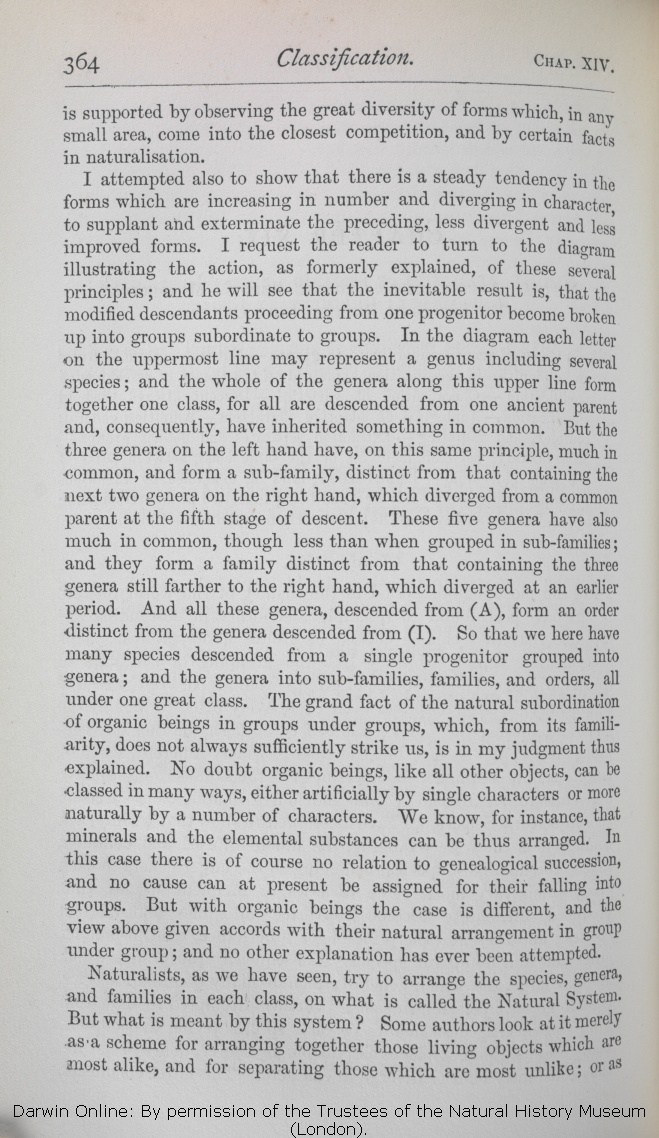I attempted also to show that there is a
steady | steady 1872 | | constant 1859 1860 1861 1866 1869 |
| preceding, less divergent and 1866 1869 1872 |
| less divergent, the 1859 1860 1861 |
| improved 1866 1869 1872 | | improved, 1859 1860 1861 |
| ..... 1866 1869 1872 | | and preceding 1859 1860 1861 |
| is, 1872 | | is 1859 1860 1861 1866 1869 |
| ..... 1869 1872 | | all 1859 1860 1861 1866 |
| whole of the genera along this upper 1869 1872 |
| genera on this 1859 1860 1861 1866 |
| line 1859 1860 1869 1872 | | upper line 1861 1866 |
| are 1869 1872 | | have 1859 1860 1861 1866 |
| ..... 1861 1866 1869 1872 | | but unseen 1859 1860 |
| parent 1869 1872 | | parent, 1859 1860 1861 1866 |
| containing 1872 | | including 1859 1860 1861 1866 1869 |
| much 1872 | | much, 1859 1860 1861 1866 1869 |
| in common, though less than when grouped in sub-families; 1872 |
| though less, in common; 1859 1860 1861 1866 1869 |
| containing 1872 | | including 1859 1860 1861 1866 1869 |
| farther 1861 1866 1869 1872 | | further 1859 1860 |
| an 1872 | | a still 1859 1860 1861 1866 1869 |
| descended 1859 1860 1866 1869 1872 | | pescended 1861 |
| into 1872 |
| are included in, or subordinate to, 1859 1860 1861 |
| are subordinate to 1866 |
| in 1869 |
| under one great 1872 |
| united into one 1859 1860 1861 1866 |
| in one great 1869 |
| class. 1859 1860 1861 1869 1872 | | great class. 1866 |
| The 1872 | | Thus, the 1859 1860 1861 1866 1869 |
| OMIT 1866 1869 1872 |
| in natural history 1859 1860 1861 |
| natural subordination of organic beings in 1872 |
| subordination of 1859 1860 1861 |
| natural subordination of all organic beings in 1866 1869 |
| groups 1869 1872 | | group 1859 1860 1861 1866 |
| groups, 1869 1872 | | group, 1859 1860 1861 1866 |
| thus 1872 | | fully 1859 | thus 1860 1861 1866 1869 |
| many 1869 1872 |
| groups in many 1866 |
| arranged. 1872 | | arranged; 1866 1869 |
| to 1869 1872 |
| in their classification to 1866 |
| at present 1869 1872 | at present 1866 |
| accords with 1872 | | explains 1866 1869 |
|
Naturalists, | Naturalists, 1866 1869 1872 | | Naturalists 1859 1860 1861 |
| as we have seen, try 1866 1869 1872 |
| try 1859 1860 1861 |
|









